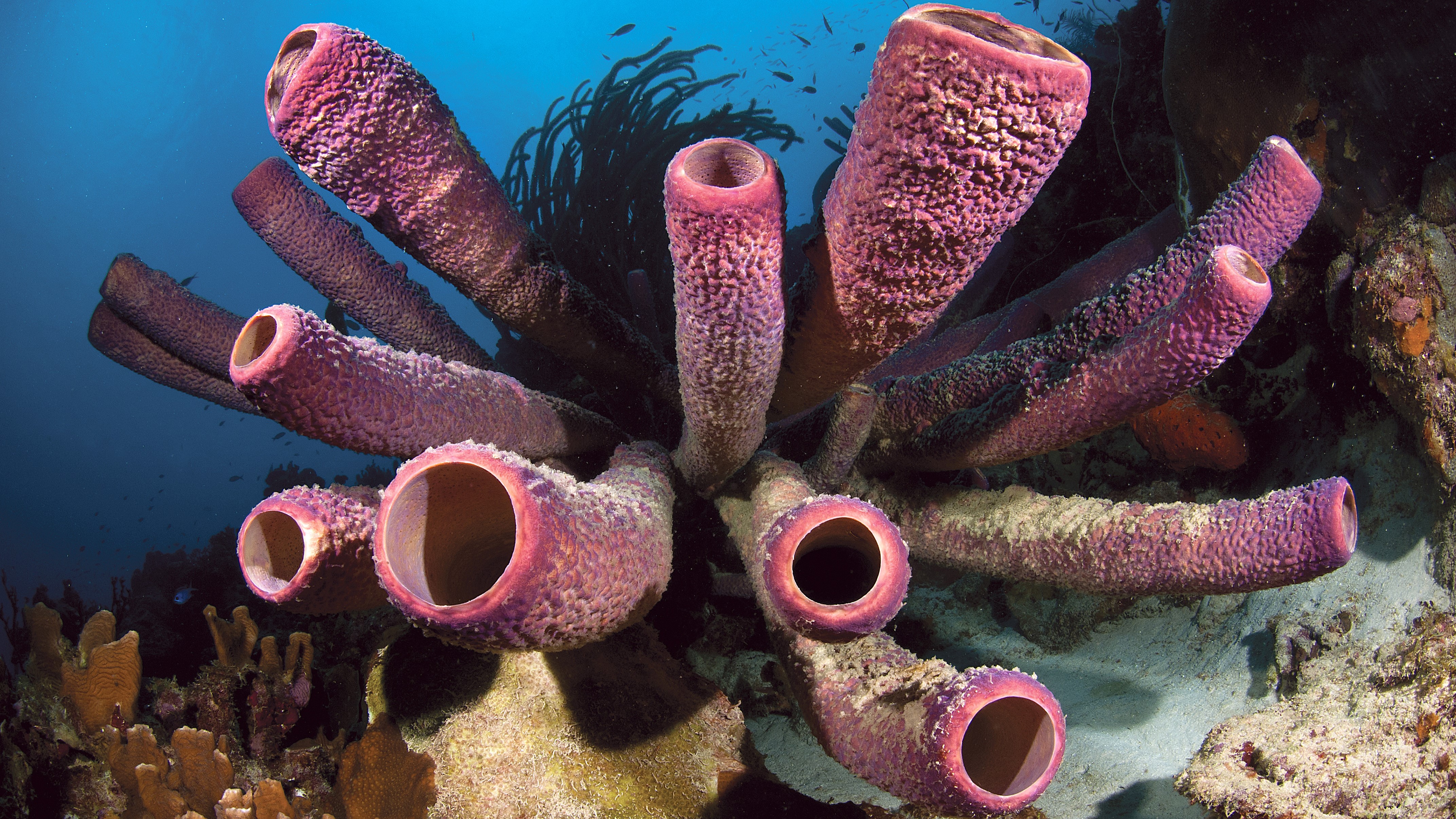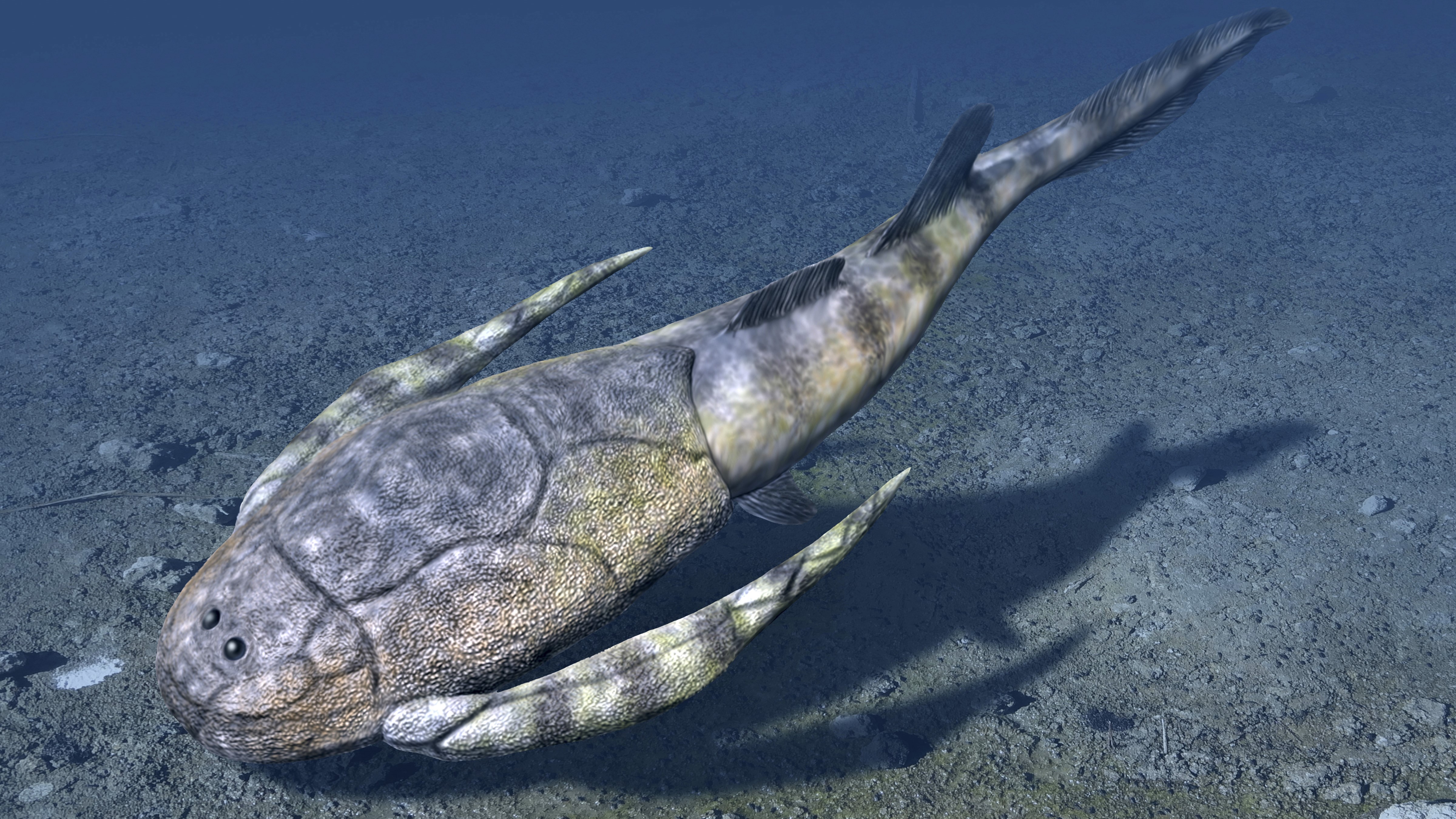
What were the first animals to have sex?
Animals have been reproducing sexually for hundreds of millions of years, but not always like we do it.

Our planet is filled with a dazzling variety of creatures that bump uglies to reproduce. Cats do it. Dogs do it. The birds and the bees definitely do it. But what were the first animals to have sex?
Animals have been sexually reproducing since they evolved, so the first animals to have sex were the first animals to exist. Researchers are still searching for direct evidence of the first animals, but they likely emerged within the last 800 million years, lived in the ocean and looked like sponges.
The sponges in our oceans today reproduce sexually by ejecting sperm and egg cells into the water, which combine to form new sponge larvae, according to the Exploring Our Fluid Earth website hosted by the University of Hawaii.
But while ancient sponges may have been among the first animals to reproduce sexually, the act itself long predates them. That's because life forms were having sex before animals came onto the scene.
"The first animals to have sex were already having sex before they were animals," John Logsdon, an associate professor of biology at the University of Iowa, told Live Science.
Related: Do animals have friends?
Logsdon traces sexual reproduction by looking for the presence of meiosis, a form of cell division that creates reproductive cells in eukaryotes — organisms with a nucleus in their cells, such as animals, plants and fungi.
Sign up for the Live Science daily newsletter now
Get the world’s most fascinating discoveries delivered straight to your inbox.
"It's pretty clear that all eukaryotes either had the ability to do meiosis or have the ability to do meiosis," Logsdon said. "The logical inference there is that a common ancestor of all of us did."
So when did the first eukaryotes evolve? According to Logsdon, the answer is around 2 billion years ago, when simple bacteria would have participated in some kind of genetic exchange.
But sex among sea sponges and bacteria is quite different from the sexual intercourse, or copulation, that humans and many other animals engage in, which relies on a more intimate internal fertilization. For the first evidence of that, scientists look to ancient fish fossils.
"The earliest evidence of intimate sexual reproduction using copulation is from placoderm fishes of the Devonian period [419.2 million to 358.9 million years ago], like Microbrachius dicki," John Long, a paleontology professor at Flinders University in Australia and author of "The Dawn of the Deed: The Prehistoric Origins of Sex" (The University of Chicago Press, 2012), told Live Science in an email.

Fossils reveal that M. dicki males had paired claspers to inseminate females internally, while the females had reciprocal genital plates. Long and his team found that the male and female fish would have hovered side by side during copulation with their arm-like limbs linked, so the first sex act would have looked like square dancing.
"We have placoderms to thank for both the joy of sex and the labors of childbirth," Long wrote in his book, "The Secret History of Sharks" (Ballantine Books, 2024).
Sexual reproduction has many benefits. For one thing, offspring get genes from both parents, unlike in asexual reproduction, in which offspring get only the genes of one parent. This mix of genes enables animals to better adapt to changes in their environment.
"Sexual reproduction means that the genetic make up of offspring are more diverse than asexual creatures that just clone themselves (like jellyfish), so it's far less likely that the entire population of the species is susceptible to being wiped out by diseases," Long said. "This greater variability in the gene pool enhances survival not only [against] pathogens, but also for environmental changes, e.g. climate changes, or even better tolerance of chemical toxicity if say volcanic eruptions alter sea water chemistry."

Patrick Pester is the trending news writer at Live Science. His work has appeared on other science websites, such as BBC Science Focus and Scientific American. Patrick retrained as a journalist after spending his early career working in zoos and wildlife conservation. He was awarded the Master's Excellence Scholarship to study at Cardiff University where he completed a master's degree in international journalism. He also has a second master's degree in biodiversity, evolution and conservation in action from Middlesex University London. When he isn't writing news, Patrick investigates the sale of human remains.









